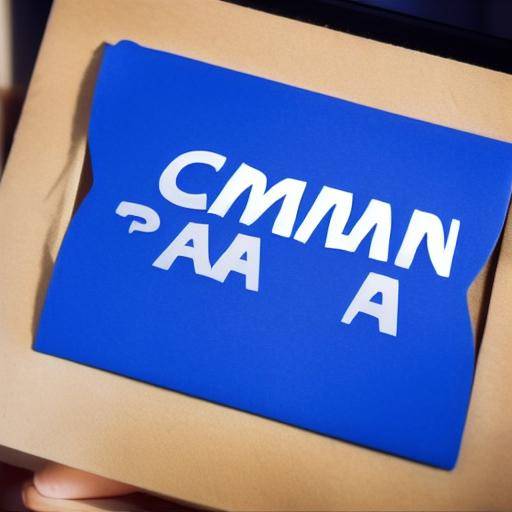
Collaborative ideation in brainstorming is a powerful tool that encourages the generation of innovative ideas by working as a team. In this article, we will explore in detail how to use this technique effectively, best practices to enhance group creativity, and how to integrate collaborative work to achieve exceptional results.
Introduction
The brainstorming, or brainstorming, is a strategy for group creative sessions, where participants propose solutions, ideas and approaches to address a specific problem or challenge. The collaborative ideation focuses on enhancing collective creativity, allowing each team member to contribute their unique perspective to enrich the brainstorming process.
In this guide, we will explore the concept of collaborative ideation, effective brainstorming techniques, and the importance of teamwork to maximize the generation of innovative ideas. In addition, we will provide practical advice, real examples and a comprehensive view of how to implement these strategies in various working contexts.
History and Background
The concept of collaborative ideation has its roots in social psychology and the theory of creativity. Since Alex Faickney Osborn's pioneer experiments in the 1950s, brainstorming has become a technique widely used in business and educational environments.
Over the decades, brainstorming has evolved to integrate more collaborative approaches, recognizing the importance of diversity of perspectives in the generation of innovative ideas. This evolution has led to the development of more structured and effective techniques to foster collaborative ideation.
Analysis in Deep
Benefits of Collaborative Ideation
Collaborative ideation promotes an inclusive and enriching environment, where each team member feels valued and motivated to contribute to their ideas. This diversity of perspectives not only improves the quality of the proposed solutions, but also promotes a sense of belonging and commitment to the objectives of the team.
Challenges of Collaborative Ideation
While collaborative thinking can generate exceptional results, it also presents challenges, especially in environments where rigid hierarchies can limit the equal participation of team members. The effective management of group dynamics and the establishment of a climate of trust are essential to overcome these challenges.
Current trends
In the digital era, collaborative ideation has found new expression channels through online collaboration platforms and project management tools. These technologies have facilitated remote participation and expanded opportunities for global collaboration, redefining the limits of collective creativity.
Comprehensive review
Practical Applications
Collaborative ideation has been successfully applied in a variety of contexts, from product development and business problem solving to social innovation and service design. We will examine real cases that illustrate how leading companies and organizations have effectively implemented collaborative thinking in their decision-making and product development processes.
Best Practices
Some key practices to foster collaborative insight into brainstorming include clear definition of objectives, diversity of profiles and effective facilitation of brainstorming sessions. We will also explore different brainstorming techniques that have proven to be especially effective in stimulating collective creativity.
Comparative analysis
We will compare the advantages and disadvantages of collaborative ideation in contrast to more traditional decision-making approaches. We will analyze how convergence and divergence in the process of generating ideas can lead to more innovative and sustainable long-term results.
Practical Tips and Recommendations
Keys for a Successful Collaborative Ideation
1. Set an inclusive environment: Encourage a climate of respect and openness where each team member feels comfortable sharing their ideas, regardless of their hierarchical position.
2. Define clear objectives: Before starting a brainstorming session, make sure all participants understand the specific goals and challenges that will be addressed, which will allow for greater concentration in the generation of relevant ideas.
3. Diversity of Perspectives: Try to integrate members with different experiences and skills to enrich the diversity of ideas and approaches.
4. Effective Facilitation: Designate a facilitator to guide the brainstorming session and ensure that the rules established to promote an equitable exchange of ideas are followed.
Industry Perspectives and Expert Reviews
Interviews with Experts
We will enter into the opinions and experiences of experts in organizational psychology, leadership and creativity to understand how collaborative thinking can enhance performance and innovation in the workplace.
Future Trends and Predictions
We will explore emerging trends in the field of collaborative ideation, from the impact of artificial intelligence on the process of generating ideas to the evolution of collaborative work spaces.
Conclusions and FAQs
Conclusions
Collaborative ideation in brainstorming not only promotes the generation of innovative ideas, but also strengthens the team spirit and fosters a creative and productive working environment. By integrating effective brainstorming techniques and promoting collaboration, organizations can reap the benefits of collective creativity.
Frequently asked questions
What are the main differences between individual brainstorming and collaborative brainstorming?
The individual brainstorming focuses on the generation of ideas independently, while the collaborative brainstorming encourages the active participation of the entire team to enrich and build on the ideas of others.
How can I overcome the challenges of collaborative ideation in working environments with rigid hierarchical structures?
It is crucial to foster a culture of openness and respect, where each team member feels valued and empowered to contribute to their ideas. Transparent communication and motivation to actively listen to the perspectives of all participants are essential to overcome these challenges.
What are the most effective technological tools to facilitate collaborative thinking in brainstorming?
There are numerous online platforms and collaborative tools that can enhance collaborative thinking, such as virtual boards, voting applications and digital workspaces. The choice of the right tool will depend on the specific needs and dynamics of each team.
Concluding, collaborative insight into brainstorming is a powerful strategy to stimulate collective creativity and generate innovative solutions. By implementing effective techniques and promoting an open-ended environment, organizations can capitalize on the diversity of perspectives for the benefit of their objectives and achieve exceptional results.
With this detailed guide, readers can understand in depth the importance of collaborative ideation, acquire practical tools for its implementation and get a full insight into how to enhance teamwork through collaborative brainstorming.






